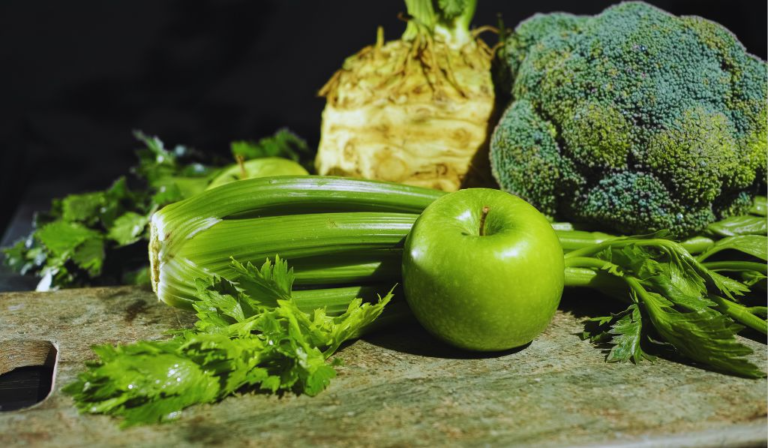Diet Chart for PCOD: 6 Essential Tips to Manage PCOD Effectively

Understanding PCOD:
PCOD is also known as polycystic ovary syndrome, is a common endocrine disorder that affects many women in their child bearing years. PCOS causes include small cysts on the ovaries, irregular bleeding and hormonal imbalances may also lead to other complications. This hormonal imbalance can cause physical symptoms and dramatically affect a woman’s well-being and health. This article will be a complete reference to understand all the PCOD related complications and why it is so common in females, the issues accompanied with it and the proper diet chart for pcod and the life changes that need to be made.
Reasons That PCOD is So Prevalent Among Females
PCOD is prevalent in approximately 1 out of every 10 women in the reproductive age group.The exact cause of PCOD is unknown, but several factors contribute to its prevalence:

- Genetics: Family history of PCOD also puts one at a higher risk of developing complications from it.
- Insulin Resistance: It is common for women with PCOD to have insulin resistance which in turn causes higher levels of insulin that can stimulate the ovary to produce more androgens.
- Inflammation: It has also been established that higher levels of androgen are produced in cases of higher inflammation in the body.
- Lifestyle Factors: Inadequate diet, sedentary lifestyle, and obesity have been found to worsen PCOD symptoms. It is advisable to prepare a healthy diet chart for pcod and follow it by heart.
Some of the typical issues that Faced by Females with PCOD:
Common complaints on women who have PCOD are due to the hormonal fluctuations that are characteristic of the condition. The common issues are:

- Irregular Menstrual Cycles: One of the main characteristics of this condition is menstrual irregularity. They may have irregular periods, that is, either they have scanty and prolonged or heavy flows in between for long intervals.
- Infertility: This is a condition that affects women in their reproductive age leading to infertility. Hormonal fluctuations can disrupt the cycle and prevent ovulation thereby making it hard for conception to occur.
- Weight Gain: Most women with the PCOD disorder have issues with weight and they have a difficult time shedding off the pounds. This is usually coupled with insulin resistance which is characteristic of PCOD patients.
- Acne and Skin Issues: Hyperandrogenism is inconvenient for women: it causes acne, oily skin and other skin diseases in PCOD patients.
- Hair Growth and Hair Loss: PCOD also has symptoms like hirsutism, that is over development of hair in the face and body and hair loss in the head.
- Mood Swings and Mental Health Issues: Imbalances of different hormones can also have an impact on mental health and cause shifts in mood, anxiety and depression.
Life Changing Tips for those Suffering from PCOD or for those Who want to Manage it
Thus, there is no bulletproof way to avoid developing PCOD, but pinning some key changes in your lifestyle and follow a diet chart for PCOD can help a lot in decreasing the possibility of developing this condition and in controlling the symptoms successfully. Here are some essential tips that can be taken:

- Maintain a Healthy Weight: Adopting a healthy lifestyle by ensuring that one takes balanced diets accompanied by several forms of exercises can prevent the occurrence of PCOD and also help in managing it.
- Eat a Balanced Diet: It is recommended that one should include plenty of whole grains, lean proteins, healthy fats and fresh fruits and vegetables in the diet in order to regulate insulin production as well as decreasing inflammation. Hence, an appropriate diet chart for pcod must be prepared to balance out all the aspects.
- Regular Exercise: Frequent exercise has a positive outcome with respect to insulin resistance and weight loss furthermore, it helps in PCOD symptoms alleviation.
- Manage Stress: Stress is known to worsen hormonal disbalances as it progresses from a chronic stage. Yoga, meditation, and deep breathing exercises are some of the recommendations when it comes to patients dealing with stress.
- Avoid Smoking and Limit Alcohol: Tobacco consumption in any form and alcohol are likely to worsen the symptoms of PCOD and possible complications.
- Adequate Sleep: Sleeping is one of the critical aspects of health and as such, the proper amount of quality sleep is required to regulate the hormones. For optimum health, adults are recommended to sleep for 7-9 hours every night.
Is It Possible To Cure PCOD Completely or It Can Only Be Managed?

The medications for PCOD presently are not curative. But these can be easily brought under control through some changes in the activities one is able to do, medication and alteration in diet means to follow a proper diet chart for pcod. However, if properly managed, many women affected by PCOD can live healthy, happy and productive lives. Consultation with a health care provider is crucial to attain optimal results as it is unique to the patient’s condition.
Some foods which are bad for PCOD patients include:
This section summarizes some foods that should not be eaten or should be taken in limited quantities because they can worsen PCOD. Hence, it is better follow a diet chart for pcod.These unwanted food list includes:

- Sugary Foods and Beverages: Sugary foods must be avoided since they make patients develop insulin resistance hence exacerbating the PCOD. Thus it is advisable not to take sweets and chocolates, bakery products, confectionery and carbonated drinks.
- Refined Carbohydrates: Low GI foods like white bread, pastry, most processed food all contribute to elevated levels of glucose in the blood; they should be avoided.
- Processed and Fried Foods: The regularly consumed processed and fried foods contain unhealthy fats which cause inflammation to the body and obesity.
- Dairy Products: It is also important to note that, while taking PCOD treatment for some women, they should avoid taking dairy products as they worsen the situation. One should consider giving up or limiting dairy to notice if the condition changes.
- Red Meat: Red meat intake should be kept to a minimum because it is inflammatory and should not be a staple in a PCOD diet plan.
Foods to Include in a Diet Chart for PCOD
It is crucial to note that a healthy diet chart for PCOD plays an integral part in PCOD management, and hence, the following diet chart for PCOD can help to deal better with the PCOD issues. Here are some foods to include:

- High-Fiber Foods: It means that whole grains, vegetables, fruits, and legumes are beneficial when it comes to changes taking place in insulin sensitivity.
- Lean Proteins: Meats such as chicken, fish and protein sources from the vegetable products for instance tofu, beans among others.
- Healthy Fats: Although they are still on the high side on the glycemic index they are healthy and should be consumed in large proportions Avocados, nuts, seeds, and olive oil.
- Anti-Inflammatory Foods: Blueberries, omega-3 rich fish, and spinach.
- Low Glycemic Index Foods: Meals which do not have an adverse effect of elevating blood sugar levels.
The following diet chart for PCOD includes suitable foods that help women with PCOD.
So formulating a proper diet chart for PCOD is very important for women suffering from the problem of PCOD and to alleviate the symptoms of this ailment. Here is a sample diet chart for PCOD that can help:

Breakfast(as per the diet chart for PCOD)
- Option1: Greek yogurt with berries and sprinkling some nuts on it ( Walnuts or almonds, for example).
- Option 2: Whole grain toast and mashed avocado accompanied by a poached egg.
- Option 3: Spinach banana and chia seeds smoothies with almond milk.
Mid-Morning Snack
- Option 1: 30-45g of almonds or walnuts.
- Option 2: A piece of fresh fruit like an apple or pear would be the second best thing.
- Option three is carrot and cucumber sticks with hummus.
Lunch
- Option 1: Quinoa salad, mixed green, grilled chicken breast and vinaigrette.
- The second prepared option is the lentil soup served with a serving of whole grain bread.
- The third option would be a brown rice bowl served with steamed vegetables and tofu.
Afternoon Snack
- Option 1: A small serving of the safest fruit which are the berries.
- Option two is avocados; a few slices accompanied by whole grain crackers.
- Option 3: Celery with peanut butter.
Dinner
- Option 1: Grilled salmon and steamed vegetables and baked sweet potatoes.
- Second: stir fried vegetables with tofu served with brown rice.
- Option 3: Chicken breast, grilled, served with steamed quinoa and freshly steamed broccoli.
Evening Snack (If Needed)
- Option 1 is The activity is a small handful of nuts.
- Option 2: Herbal tea with a piece of dark chocolate.
Option 3: 1/2 cup of mixed berries of your choice.
The above diet chart for pcod is an example but you can modify as per your taste and need.
Recap:
PCOD is a disorder which is seen in many women of child bearing age but with the management of this condition you can live a normal healthy life. Thus, pcod can be effectively overcome with a specialized healthy diet chart for PCOD, exercise routines, stress-relieving measures and modifications in lifestyle. Although there is no permanent solution for PCOD, these measures go a long way in dealing with the issue. It is advisable to seek the services of a doctor to come up with a plan that will suit your situation.
Through the diet chart for pcod and the other guidelines laid out in this guide, women with PCOD can start taking charge of their health and improve their quality of life. Just like managing PCOD, one has to be consistent and dedicated in order to successfully make healthy choices and follow a specialized diet chart for pcod.






